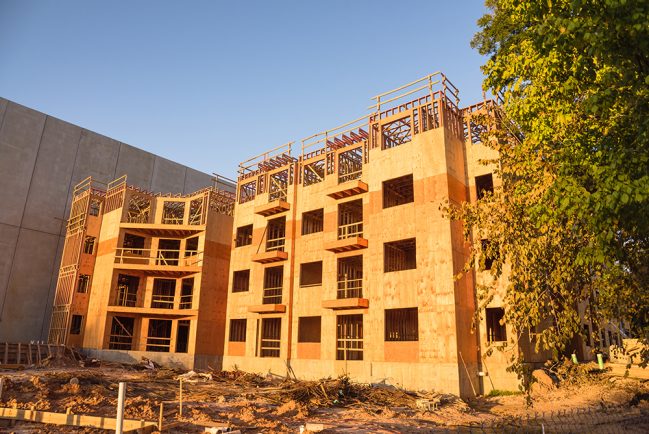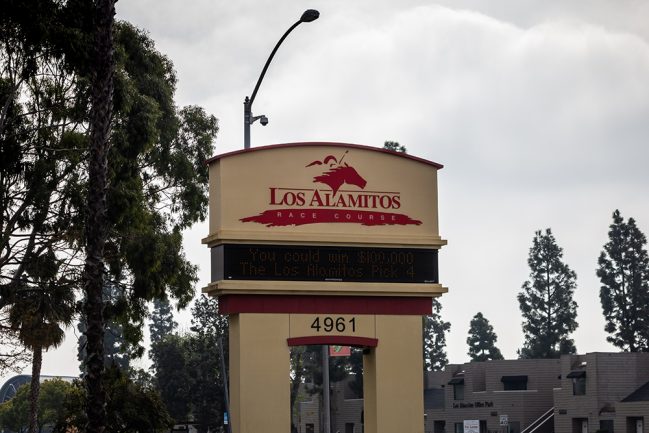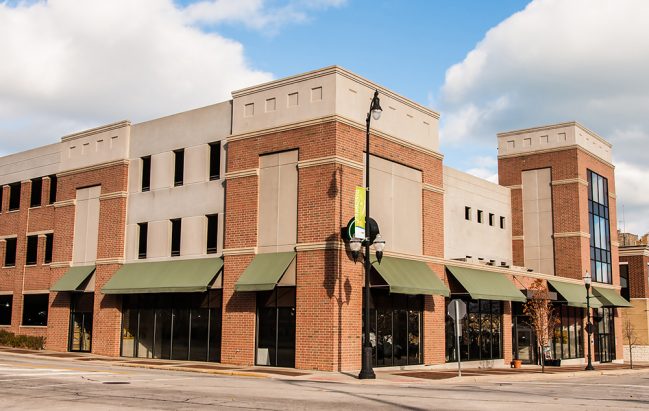There are always changes in the makeup of the commercial real estate market and what people are interested in. Self-storage facilities, however, have held steady and are now believed to be the most secure commercial real estate investment of all. Indeed, it is now a $38 billion industry. Recent research on self-storage units has shown just how viable this industry now is.
Progressive people in California have long complained that Proposition 13 contains a loophole. Specifically, they feel that those who own commercial real estate are unfairly favored compared to those who own residential real estate. The mainstream media has accepted that there is a loophole in Proposition 13, but it seems they have not researched what it is at all. In fact, real experts agree that Proposition 13 is solid and has been since it was first implemented.
Under Proposition 13 tax reform, property tax value was rolled back and frozen at the 1976 assessed value level. Property tax increases on any given property were limited to no more than 2% per year as long as the property was not sold. Once sole, the property was reassessed at 1% of the sale price, and the 2% yearly cap became applicable to future years.
The Orange County commercial real estate market, like all other markets, fluctuates. Sometimes, investors should build, but at other times they should rest. This year, it seems that Orange County is an area for construction, particularly for light manufacturing, distribution, and warehouse properties. This is according to this year’s Mansfield Commercial Real Estate analysis.
Orange County, NY’s total inventory of prime industrial space increased to 22.5 million square feet as of year-end 2017. The amount of space that was added to inventory in 2017 exceeded 1.3 million square feet, the most for the County in at least two decades.
The vacancy rate for industrial spaces, meanwhile, dropped from 4.9%, already low, to just 3.3%.
Why Developers Love Orange County Commercial Real Estate
Many developers love Orange County because of how connected it is to highways and other forms of infrastructure. This is why heavy investments are being made in industrial properties. Developers and investors alike feel the market will become even more tight across 2018.
One recent development was completed by Matrix Development Group, who constructed an industrial warehouse in Orange County that is now shared by Amscan, one of the largest distributors and manufacturers of party goods in the country, and AmerisourceBergen, one of the largest pharmaceutical distributors in the country. Meanwhile, companies such as Aurorchemicals have also moved into the area. They stated that access to airports and highways, the welcome from local politicians, and support from the Orange County Partnership were driving factors in their move.
From site selection assistance, financing options, and employment training to marketing, the Orange County Partnership is your premier (no-cost) resource for economic development support.
Development Trends in Orange County Commercial Real Estate
In 2017, the focus was more on build to suit properties. Indeed, 80% of all square feet in Orange County are made up of such properties. This trend is also set to continue. The aforementioned Matrix Development Group wants to redevelop a property to turn it into a 1.2 million sq/ft distribution center. The land they have eyed for this was originally earmarked for the Ridge retail project but this failed and was abandoned by the developer.
The developer proposing to build a 700,000-square-foot retail, dining and entertainment complex on Route 300 in the Town of Newburgh officially announced it is abandoning the project, two months after the Newburgh school board rejected a 20-year tax-break deal.
While abandoning this project was a significant blow, not in the least due to the loss of potential jobs, it was almost instantly decided that the land could serve other purposes and it seems such a purpose has now been found. There is huge confidence in the market and developers like Matrix, including Frassetto, are rapidly meeting demands.
In 2018, Bluewater Industrial Partners aims to develop a 1 million sq/ft warehouse where routes 17K and 747 intersect in Montgomery. Just last year, a similarly huge property was developed in the same area, which is now the FedEx Ground Distribution Center. Last year, only the Matrix Business Center and the McKesson’s project were larger in 2017.
The year 2017 also saw the expansion of Steris Corp’s Chester. About 60,000 sq/ft was added to the building and is now used to disinfect medical supplies. People continue to have confidence in the market and there is even a concern that some businesses have to be turned away from Orange County simply because there is no space.
Indeed, even smaller stores, such as internet distribution companies and ready-made meal developers are looking for space in Orange County. So far, they seem particularly interested in a Sol Eckstein development, who will offer a triple-net lease at $7.50 per square foot.
Investors know that there are vast opportunities in Orange County commercial real estate and that it’s a market that will continue to thrive. Therefore, it’s important for investors to keep the city of Orange County in focus when considering places to invest.
Since the end of the recession, values of industrial properties have doubled. In fact, they have grown by 11% since April 2017. Compare this to the commercial real estate market as a whole, where there was a 1% decline, and it quickly becomes apparent where the money is. This is according to a recent report by Green Street Advisors, based in Orange County.
Ecommerce is a disruptor that has proven to have a revolutionary impact on retail, creating strong headwinds as companies work to rationalize their physical store footprints. On the flip side, industrial properties have greatly benefitted from the proliferation of online shopping.
Orange County is known for its low vacancy rates in residential properties, but its warehouse properties have even lower vacancy rates. In fact, there is a shortage in industrial properties, particularly in warehouses across the region. Anyone interested in manufacturing, logistics, operations, or any form of warehousing will struggle to find something. And it seems that the key reason for this, as highlighted in the Green Street Advisors report, is online shopping.
Online Shopping and the Commercial Real Estate Industry
Because so many people now shop online, warehouse needs have changed tremendously. In the past, retail outlets were the owners of the majority of consumer goods. Today, however, all that is different. In fact, according to one report, online shopping was up 16% in 2017 alone.
In the fourth quarter and in 2017 as a whole, U.S. online retail grew faster than it has since 2011. E-commerce represented 13% of total retail sales in 2017 and 49% of the growth.
Warehouses have had to be redeveloped so that they were able to store things to be distributed not to retail stores, but rather to people’s homes. Not just that, consumers now expect to receive their orders in a hurry, often even on the same day. The result is that there is a need for warehouses in all metropolitan regions of the country.
Supply Unable to Keep Up with Demand
As is usual in real estate, it seems that demand has by far outpaced new supply. Hence, those in need of properties can no longer make demands in terms of where or what they are looking for. Rather, they have to take whatever is available. This is also seen in a shift in focus of real estate acquisition companies such as Bixby Land Co., who now focus more strongly on warehouse properties.
Bixby Land Company targets the acquisition of institutional quality industrial properties in California and select Western U.S. markets. Industrial investments are focused on high quality warehouse and distribution buildings in major West Coast markets.
The numbers across Southern California are impressive:
1. Los Angeles County is home to 800 million sq/ft of industrial space. They have a vacancy rate of just 1.4%. A further 2 million sq/ft is currently being constructed. According to experts, this shortage is likely to lead to a 9.5% increase in rental rates. The latest big leases in this area include Tempur Sealy, Fashion Nova, and Glenair Aerospace.
2. Inland Empire is home to 520 million sq/ft and has a vacancy rate of 3.7%. A further 21 million sq/ft is currently being developed. Last year, rents rose by 26% and it is expected that they will rise by at least another 8%.
3. Orange County is home to some 200 million sq/ft and has a vacancy rate of 2.4%. Additionally, a further 1.2 million sq/ft is currently being developed. Over the past five years, rents have grown by 7.6% on average each year and this is expected to be 4% this year. Engineered Floors, Shindoa Design Center, and Volcom are just some of the new big leases.
State of the Art Developments for Warehouses
Additionally, there has been a significant change in need when it comes to warehouses. No longer are businesses happy with a simple rectangular area with a lot of height. Rather, they require all kinds of state of the art technology for improving their operations.
Developers and investors are so confident of market growth that some have been getting involved in new constructions that are known to be ‘speculative’. This means that they have not yet found a tenant at all but that they are so sure they will be able to secure tenants in the future that they are more than happy to invest millions in new constructions. This is also due to the fact that warehouse design has gone through significant changes, meaning that modern and new facilities are likely to be in big demand.
Warehouse design has changed a lot in recent years, as large distribution centers (DCs) have moved away from single channel to multichannel inventories and even smaller warehouses have begun to automate many operations.
It is common to see clients looking for facilities that are much taller than ever before. In so doing, goods can be stacked with ease. Since forklifts are no longer a requirement with robots now doing most of the job, having higher buildings is much more feasible. Indeed, automation of most processes has led to significant changes in design.
It is also vital that all warehouses have proper electricity supply. Not just that, but businesses mus also look for sustainable supplies to reduce their environmental impact. Additionally, they require more extensive parking bays so that the distribution trucks have direct access. Lastly, they need increased security to keep all their goods safe.
Is the Increase in Prices for Warehouses and Industrial Properties Justified?
The question is whether it is justified that these types of properties have truly soared in value. Rents continue to rise in order to meet that increase in value. With Green Street Advisors reporting that there has been a doubling in the value of commercial industrial properties since the recession ended, it seems that the need, if nothing else, is not artificial. Where there is a demand, there needs to be an appropriate supply.
Naturally, things will have to slow down eventually. There will come a point where all online operations have been able to find the warehouses that they need. Until then, however, these once believed to be boring investments will continue to pay off.
Almost every profession in this country is closely regulated by different associations and official bodies. In the world of Orange County real estate in general, that professional body is the California Association of Realtors (CAR). The CAR is dedicated to advancing the profession of realtors and ensure that certain standards are put in place. The CAR can help settle and mediate commercial real estate disputes.
The purpose of the CALIFORNIA ASSOCIATION OF REALTORS is to serve its membership in developing and promoting programs and services that will enhance the members’ freedom and ability to conduct their individual businesses successfully with integrity and competency, and through collective action, to promote real property ownership and the preservation of real property rights.
When realtors are affiliated with the CAR, they are also mandated by arbitration and mediation standards. Hence, if there is ever a dispute, the CAR has procedures in place to help in resolving such. However, a commercial real estate agent is not a realtor. As a result, while some still choose to join the CAR because of their overall professional standards within the world of real property, they are also not bound by those arbitration and mediation requirements.
Some people believe that it is this particular lack of overseeing body that makes commercial realtors akin to cowboys. They believe that the term is suitable for them because it describes the fact that they work hard, are true entrepreneurs, and take whatever they can. This is particularly true for those commercial real estate professionals that operate on a commissioned-sales payment arrangement, which most of them do.
The amount a commercial real estate agent receives on a commission is calculated as a percentage of the total commercial property sale price or lease value. While it’s illegal due to anti-trust laws to set a market- or industry-wide standard for commission percentages, most agents earn anywhere from 4% to 8%.
However, regardless of how professional the commercial real estate agents are – or aren’t – there are bound to be disagreements. Usually, those are related to the manner in which they get paid. And this is where they truly set themselves apart from cowboys, because while their disputes may not be arbitrated by the CAR, they also don’t meet at high noon at the OK Coral.
How Commercial Real Estate Agents Resolve Complaints
The vast majority of disputes between commercial real estate agents is a fee disagreement. Most professional commercial real estate agents try to prevent this from happening by starting any negotiation with a clear understanding of who will be paid what even before the deal is negotiated. They have faith in the fact that their coworkers are as honorable as they are, in other words, understanding that working in an ethical manner ensures that there will be no misunderstandings, that deals will go by smoothly, and that everybody will get paid with the right amount. Mainly, however, they ensure that they have a written agreement in place for everything, including escrow, leases, responses, offers, listings, and more.
In a few situations, a contract must also be in writing to be valid. State laws often require written contracts for real estate transactions or agreements that will last more than one year. You’ll need to check your state’s laws to determine exactly which contracts must be in writing.
Additionally, while it is certainly true that commercial real estate agents don’t join the CAR, because they don’t have to, that doesn’t mean that they are not represented by any professional body. They are often members of the Association of Industrial Commercial Real Estate (AIR CRE).
AIR CRE is an innovative, member-owned platform that provides commercial real estate professionals in Southern California with the critical tools they need to be successful. We have curated the best resources that the industry has to offer, and packaged them together as a single integrated network. Our Members have unparalleled access to a system of market research, listings services, contracts and legal resources, networking, and education.
AIR CRE has also created a platform for agents who are involved in a dispute and require arbitration. This has become even more important since there have been significant changes in the market for commercial real estate professionals in Southern California.
Then, there is the fact that the majority of commercial real estate agents work from an office, rather than completely independently. While it is true that the agents are often not classed as ’employees’ of these offices, they can access their policies and procedures and use them for their own issues. These include dispute resolution strategies and mediation options.
How a Resolution Is Obtained in Disputes Between Agents
If a dispute does occur, most commercial real estate agents will be able to go through five different steps, escalating to the next one whenever a particular step did not bring a successful solution. These steps are:
Step 1 – Work with the other agent to try and come to an amicable solution for the problem.
Step 2 – If no resolution can be agreed upon by the two parties, managers will be brought in. These can be intra-office or interoffice.
Step 3 – If managerial involvement still does not lead to an agreeable solution, an arbitrator will be brought in for mediation. This arbitrator should be independent and skilled in bringing negotiations back on track.
Step 4 – Should mediation fail, then a new form of arbitration will commence, known as binding arbitration.
In binding arbitration, disputing parties waive their right to a trial and agree that they will be bound by the arbitrator’s final decision. Binding arbitration is suitable for business disputes in which two parties need to resolve internal conflicts in order to expedite an outcome.
Step 5 – If the binding arbitration fails to resolve the situation, then both parties will seek legal advice in an attempt to litigate towards a resolution. This is rare, because the point of a binding arbitration is to avoid going to court. However, this can be circumvented by suggesting that the new dispute is based on the binding decision of the arbitrator.
That being said, most commercial real estate professionals will say that it is very rare that things ever get past the second step, and even rarer for them to get past the third step.
Chipotle is a popular Mexican grill restaurant that was originally opened in 1993 in Colorado by Steve Ells. Since then, it has remained headquartered in the Rockies. However, in a surprise move, it seems that the company is now moving its headquarters to Newport Beach, something that has sent shock waves throughout the fast food industry. It seems that the company, which started as a humble eatery near the University of Denver and grew to a global chain of some 2,300 restaurants, is ready for something new.
When Chipotle opened its first restaurant in 1993, the idea was simple: show that food served fast didn’t have to be a “fast-food” experience.
The E. coli Outbreak at Chipotle
Recently, Chipotle seemed to be a restaurant that went from strength to strength. In fact, in July 2015, the company’s stock price reached almost $750, a new record. However, towards the end of that year, there was an outbreak of E. coli contamination, which caused tremendous damage to the value of the company.
When Chipotle announced the closure of 43 restaurants in Oregon and Washington state on Nov. 3 because of the outbreak, sales dropped nationally by 20 percent over the next few days. Sales were down 16 percent for the entire month of November.
Decline in Sales at Chipotle
Naturally, the company wanted to show that it was sincere in expressing apology to its customers. In spite of that and despite the containment of the outbreak, earnings declined. Various tactics were tried, including the addition of new menu items, but it was to no avail. Shareholders, including activist Bill Ackman, publicly criticized the company, which eventually resulted in Steve Ells stepping down as CEO and taking on the position of executive chairman instead.
The expanded board was supported by activist investor Bill Ackman, whose Pershing Square Capital hedge fund took a nearly 10 percent stake in September 2016.
Chipotle seems to be recovering since Ells stepped down, resulting in the company being able to move away from Denver and to Newport Beach. This came after a new CEO was appointed, who hails from Southern California. Interestingly, competition is fierce here with In-N-Out Burger, Del Taco, and Taco Bell all operating in the area as well.
Direction of the Company with Brian Niccol as CEO
Brian Niccol, the new CEO since February 2018, explained that the move will not come without some cutbacks, but that it is believed to be an opportunity for sustainable growth.
We have a tremendous opportunity at Chipotle to shape the future of our organization and drive growth through our new strategy. In order to align the structure around our strategic priorities, we are transforming our culture and building world-class teams to revitalize the brand and enable our long-term success.
Field operations workers and restaurant employees will maintain their position. However, some cuts will be made among corporate employees. So far, various corporate functions, including human resources and finance, have started to make the transfer, as the company has identified the commercial real estate property for their operations. Interestingly, Brian Niccol was the CEO as Taco Bell prior to his new appointment, which is based in Irvine.
To date, Chipotle has offices in Denver and New York, and those will be consolidated into offices in Newport Beach and Columbus, OH. This came as a significant surprise for both Denver and for Newport Beach. Indeed, no notices were given about the imminent move, which is rare considering the scale of operations of moving a huge company. In fact, even Tara Finnigan, deputy city manager for Newport Beach, was not aware of the move.
Unidentified Location of New Offices in Newport Beach
It is also not clear, what the location of the new offices will be, other than that they will be in Newport Beach. This could mean, therefore, that Chipotle is still looking for office space and this is welcome news. According to JLL, a real estate firm, there has been an increase in availability in office spaces due to more efficient use of space and new construction in the area. Hence, now could be a very good time to invest in this type of real estate.
Nationwide, vacancy rates for office spaces stand at 12.6% while Newport Beach’s vacancy rate is 10.7%. In Fashion Island, it is as low as 6%, in fact. The result is that rents are far more expensive as well, around 11% higher than the rest of the county, or 46% on Fashion Island. Again, if there is currently an opportunity to invest in office spaces, it is important to strike while the iron is hot.
The world of commercial real estate in Orange County is always exciting. Because it is such a hot market in which virtually every business would like to have a presence, and because there is almost no land available anymore, and properties that do come up are snapped up very quickly. Just recently, four multifamily properties were sold across Orange County and San Diego County by Marcus Millichap.
California Chrome will soon have to change home because the Cypress Los Alamitos Race Course will soon be redeveloped. This was agreed upon at the most recent Primary Election.
In line with the new tax reform by President Donald Trump, continued job growth, and a good GDP (gross domestic product), it seems that the commercial real estate (CRE) market in both Orange and Los Angeles County will continue to be bullish. This is also according to the latest biannual Forecast Commercial Real Estate Survey by Allen Matkins/UCLA Anderson.
The tax bill is expected to increase the rate of return on commercial real estate and makes investment more attractive. Survey participants predict it will cause moderate though uneven growth.
Shopping, especially clothes shopping, is something that has been done in the same way for a very long time. You pick something from the rails, try it on in the changing rooms, find it is too small, have to get dressed again, hunt for a larger size, try it on again, and so on. The lights in the changing rooms are unflattering and make everything look terrible, and most of us leave feeling horrible and without that must have item we came for. But this could soon all change. Retail industry predictions say that there could be exciting changes to retail properties.









